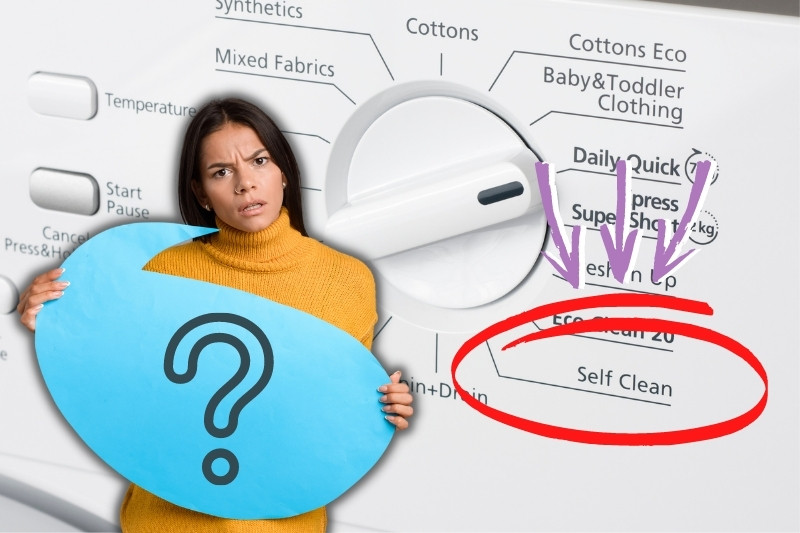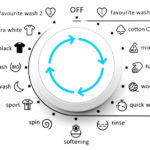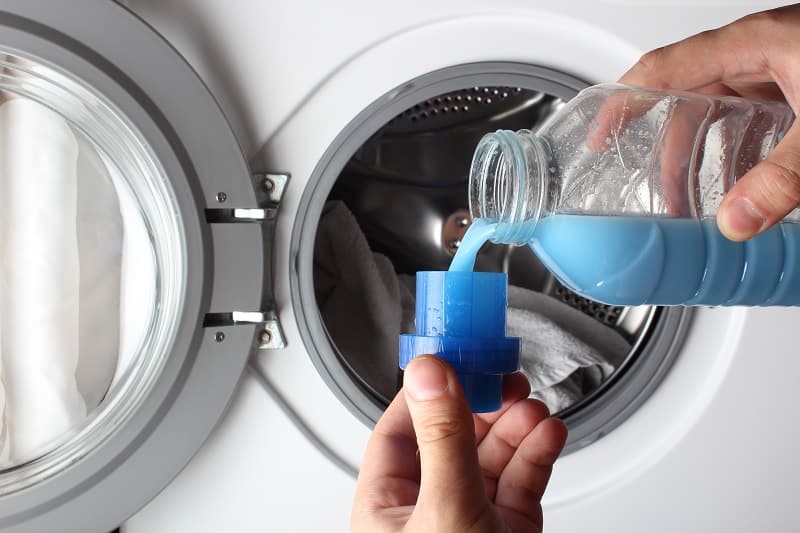Washing machines need to be cleaned and maintained on a regular basis, and failing to do this can result in a pretty whiffy machine!
In most cases, all a washing machine needs is for its user to run a clean cycle through it, and it’ll be looking and smelling as good as new in no time.
But how do you actually carry out this so-called ‘clean cycle’, also known as a maintenance or service wash?
It’s actually a pretty simple exercise, so keep on reading to discover how to remove the grime from your machine by using the clean cycle approach.
If you’ve been giving your washing machine a hard time of late, you need to spruce it up a little by allowing it to run a clean cycle.
This cycle is run when the machine is empty, and is used to clean the appliance of unwanted dirt and water. It’s not a difficult task to carry out and it takes very little time too.
Here’s how to run a clean cycle or maintenance wash in your washing machine. Just follow the steps below:
Step 1: Read Your User Manual
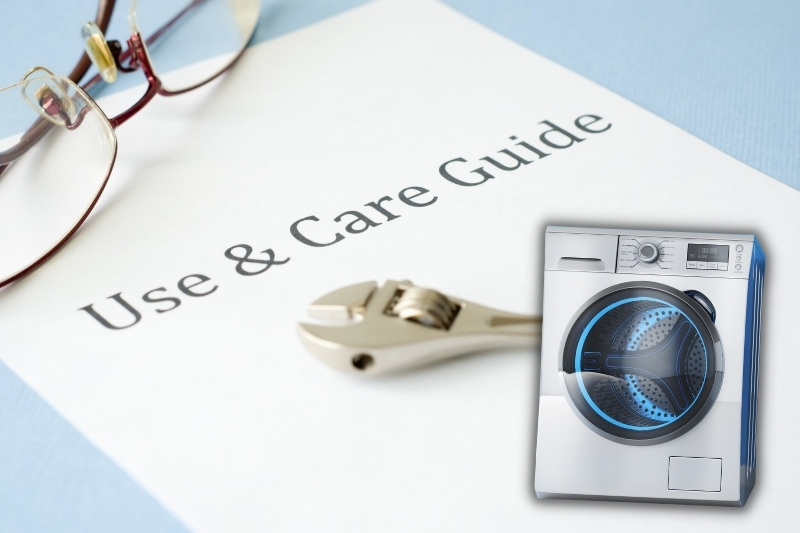
One of the very first steps you should take when running a clean cycle on a washing machine is to check the appliance’s user manual for helpful tips.
Generally, a washing machine’s handbook will tell you how you should and shouldn’t clean your appliance, so it’s always worth having a quick browse over this section in the book.
You may find that the manufacturer stipulates that you definitely shouldn’t use a particular product, and using this product may void your warranty, for example.
Additionally, if you have a modern washing machine it may actually come with a self-cleaning feature, which you can read all about in your manual. This helpful feature isn’t likely to apply to everybody’s machines, but if you’ve got it, it can be a great time saving tool to use.
Keep in mind that each and every make and model of washing machine may vary slightly, so try and keep to the advice your washing machine’s manufacturer tells you.
Of course, if you’ve thrown the user manual away you can pop onto the manufacturer’s website, and find and download the copy you need there.
Step 2: Run the Clean Cycle on Your Washing Machine
There are two primary ways you can run a clean cycle on a washing machine: use the self-clean feature or run a clean cycle without using the self-clean feature. I’ll go into more detail about these two approaches below.
Option 1: Using the self-clean method
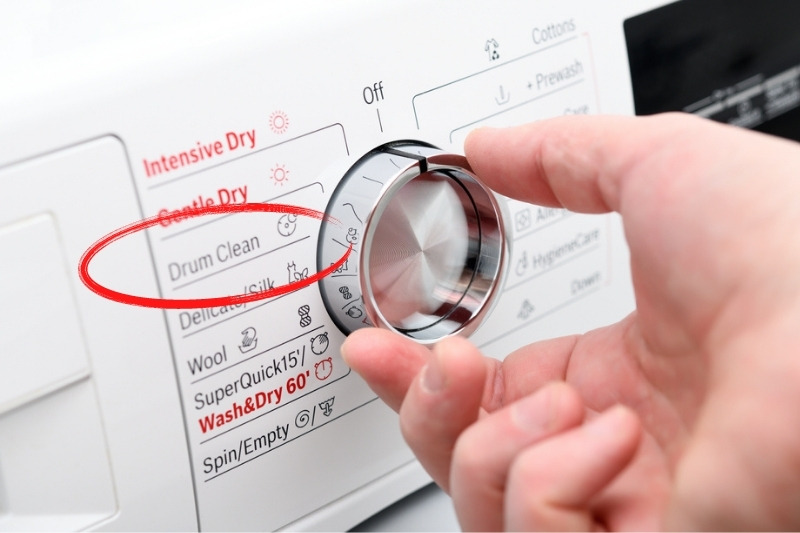
As mentioned above not all washing machines will come with a self-clean feature built in, so before you dive into this approach you need to check if you’ve got this feature.
To check, all you need to do is look at the dial/buttons on the front of your washing machine and see if you can find a button labelled ‘Self clean’, ‘Service wash’, or something similar. If you can’t see this label, but you think you do have this feature, have a look at your user manual again.
If you can’t find a reference to some self-cleaning feature, assume that you don’t have it. In this case, you can simply choose the hottest cycle offered by your machine (it should be about 90°C).
Once you’ve located the self-clean button on your washing machine you’re almost set to go. Just keep in mind these points:
- Make sure that the washing machine is empty.
- Using some sort of cleaner isn’t essential – although do read your user manual as some models may vary.
- If you see obvious tough dirt in your washing machine, using a specialised cleaner, alongside the self-clean feature, may be advised by your manufacturer.
- If you notice that a lot of residue has been left behind in your washing machine after using the self-clean feature, you may need to run another self-cleaning exercise to get rid of the unwanted dirt.
Once you’ve checked that your machine is empty you can click the self-clean button. All you need to do then is wait for the cycle to finish. When the self-cleaning exercise has ended you can move on to cleaning the rest of the appliance, you can find out how to do this in Step 3 below.
How long will self-cleaning take?
Each make and model of washing machine varies, but a self-clean on a washing machine can take anywhere between one to four hours, in general.
How often should self-cleaning be carried out?
You should try and use the self-clean feature on your washing machine about once every month. Although, if you use your washing machine more frequently, or you wash extremely dirty clothes on a regular basis, you might like to use this feature a little more often.
In addition to this, some washing machines that have a self-clean feature have a little LED light that flashed to remind users that a self-clean is needed.
Option 2: Running a clean cycle without using the self-clean feature
If your washing machine doesn’t come with a self-clean feature, you can simply choose the hottest cycle on your machine instead. This will usually be the White Cotton setting. You can run this cycle with an empty machine, or add more cleaning power using the home remedies described below.
Top-loading washing machine
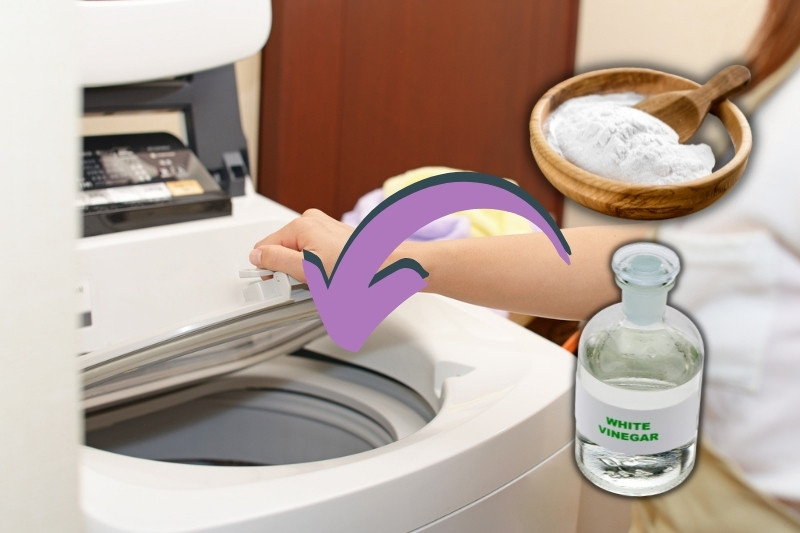
What you need:
Steps to follow to run a clean cycle in your top-loading washing machine:
- Open the lid on your top-loading washing machine and add four cups of white vinegar to the appliance.
- Start a long and hot (about 90°C) cycle.
- Stop this cycle halfway through.
- Leave the white vinegar to rest in the washing machine for an hour.
- Continue the cycle.
- Once the cycle has ended add a cup of bicarbonate of soda to the appliance.
- Start another hot and long wash.
- Leave the door open and continue on to Step 3.
Front-loading washing machine
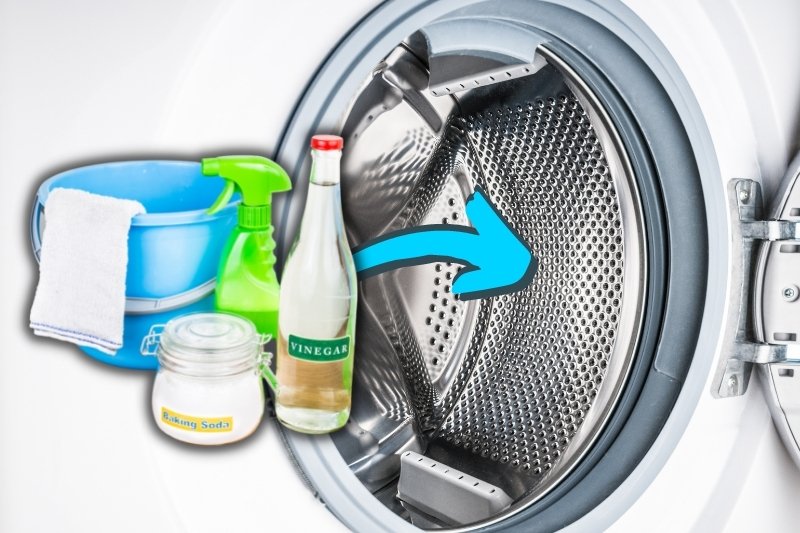
What you need:
- Spray bottle
- White vinegar
- Warm water
- Microfibre cloths
- Bicarbonate of soda
Steps to follow to run a clean cycle in your front-loading washing machine:
- In a clean spray bottle mix one part of white vinegar with three parts of warm water.
- Spray the contents of this bottle into the drum of your washing machine.
- Use a microfibre cloth to wipe the drum down.
- Open the detergent drawer in your washing machine, and pour two cups of white vinegar into the detergent slot.
- Choose a long and hot (about 90°C) cycle for the wash.
- Wait until the clean cycle has ended.
- Grab half a cup of bicarbonate of soda and pour it directly into the washing machine’s drum.
- Run a second long and hot cycle.
- Rub a clean microfibre cloth over the drum when the cycle has ended – this will remove excess product.
- Continue with the cleaning process – move on to Step 3.
How long will the cleaning cycle take?
This exercise will take at least an hour to complete, depending on how long the ‘longest cycle’ your washing machine has is, and how long you take during the pre-treatment phase.
Additionally, you may feel the need to repeat the steps above and this would require extra time.
How often should this cleaning task be carried out?
At a minimum you should try and clean your washing machine out every month using this method. This will keep the appliance in tip-top form, will protect its lifespan and will keep germs and mould at bay.
Step 3: Cleaning the Rest of the Washing Machine
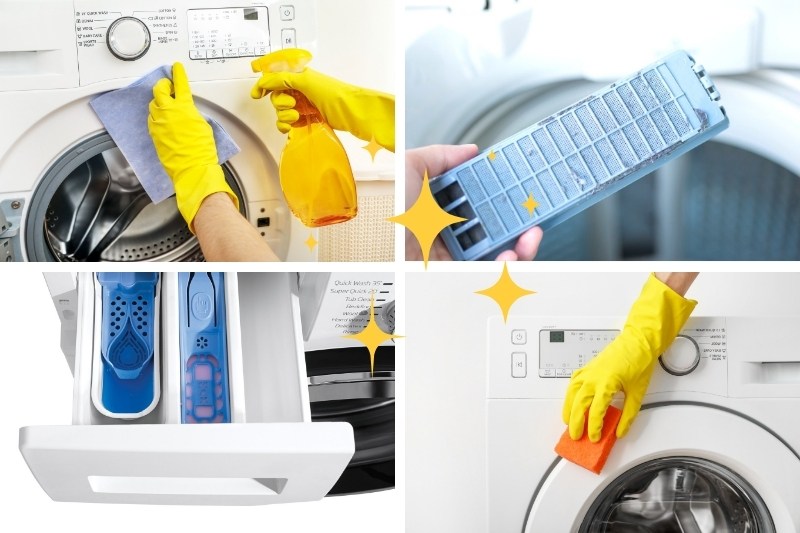
Your washing machine will be a lot cleaner once you have completed Steps 1 and 2 above, however, the cleaning phase won’t be entirely done by this point. There are still a few areas in and out of your washing machine that could do with a quick clean.
You should pay close attention to the following areas:
- The seal around the door
- The filter
- Detergent drawer
- Outside of the washing machine
You can discover how to thoroughly clean these areas in our step by step guide to cleaning an entire washing machine. In our guide you’ll also find out what products and tools you should use, and you’ll be advised on what specialised products work wonders when it comes to cleaning washing machines.
What Is a Maintenance Cycle on a Washing Machine?
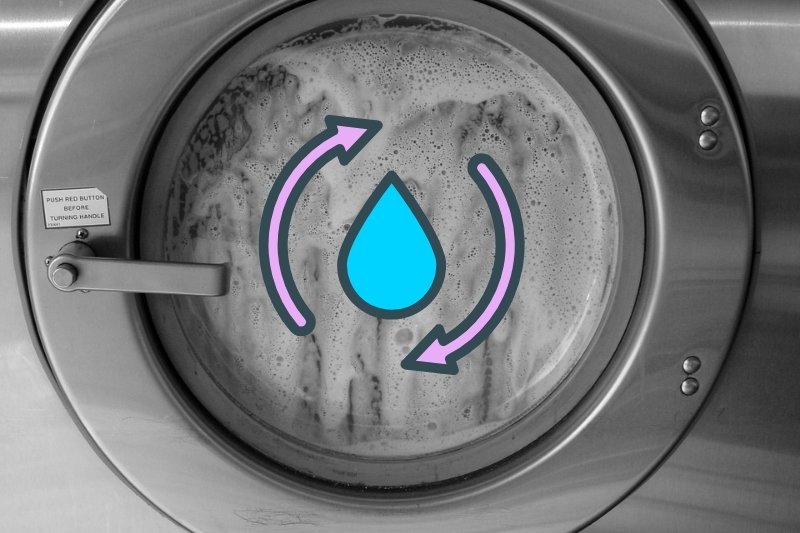
A maintenance cycle is a deep-cleaning wash that will get rid of any bacteria, grime, sludge, and mould that has built up in the inside of the washing machine.
In essence, a washing machine maintenance cycle is all about cleaning the insides of the machine thoroughly to ensure that your laundry is always clean and hygienic at the end of the cycle.
If you avoid running a maintenance wash, the inside of the machine will end up covered in gunk, debris, and old detergent. This, coupled with the moisture inside the machine, creates the perfect breading ground for bacteria and mould.
When left unchecked, this mould will end up causing a nasty, musty smell that can transfer to your laundry. You may also end up with black spots on washing.
How Often Should I Run a Maintenance Cycle?
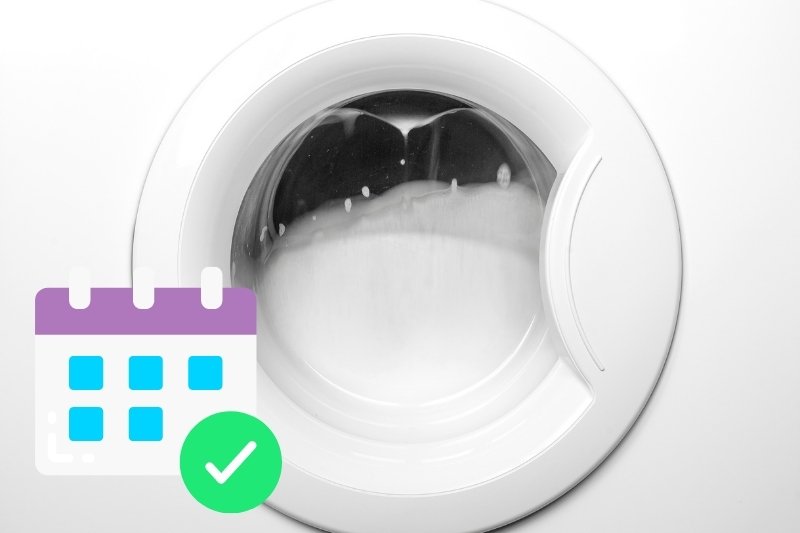
If your washing machine suddenly develops a nasty smell or you start seeing black bits in the machine or on your laundry, this is a sure signal that you really need to run a maintenance cycle.
However, you shouldn’t wait until you develop a problem! If you do, you might find that you must run the cycle a couple of times to thoroughly clear the sludge and get rid of the smell.
Instead of waiting until your washing machine smells funny, you should regularly run a maintenance cycle to keep your washing machine in tip-top condition.
Most washing machine manufacturers will have their own guidance on how frequently you should run a maintenance (or service) wash, however as a rule, you want to do it a minimum of every other month, but ideally once a month.
If your household washes a lot of heavily soiled clothing (think muddy kids clothing or carpenter’s clothing full of sawdust), it might be worth running a service wash more frequently as grime and dirt will build up in your machine even quicker.
How Hot Should a Maintenance Wash Be?
Most manufacturers recommend a temperature of 90°C for a maintenance wash or cleaning cycle. This is the hottest temperature offered by most washing machines, and will be the most effective at killing bacteria.
If your washing machine doesn’t have a cycle labelled explicitly as ‘Maintenance’, ‘Self-clean’ or something similar, you can just use the hottest cycle your machine does offer, which will usually be a White Cotton cycle.
Filters, Drawers and Doors
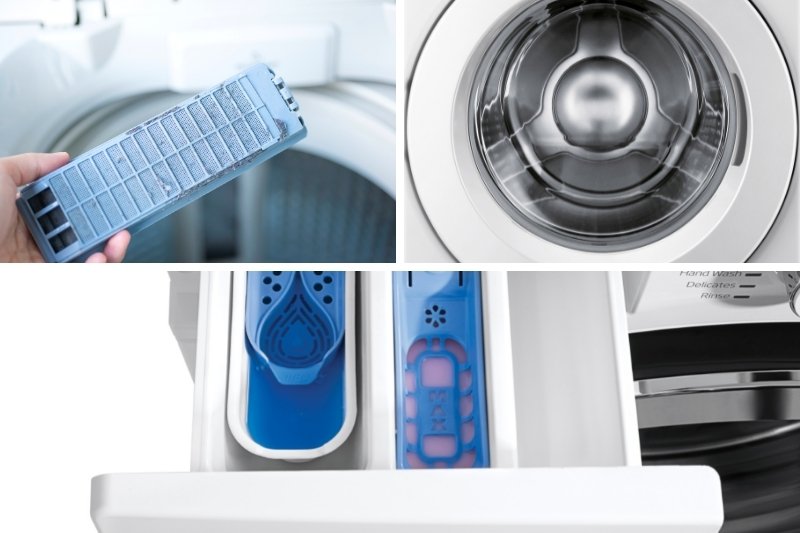
The maintenance cycle itself will clean the inside of the washing machine, and get rid of all the gunk in the hard-to-reach places. However, it will not be able to thoroughly clean the inside of the detergent drawer, filters, and the door’s seal.
Instead of leaving these areas alone, you should take the time to thoroughly clean them at the same time as running your maintenance cycle.
To clean the detergent drawer, you need to simply take the drawer out and wash it thoroughly in a sink full of warm, soapy water. You should also clean the inside of the cavity where the drawer sits before putting it back.
The filters can just be taken out and washed in warm, soapy water too. At the same time, you should check the filters for any debris that could cause a problem, such as hair pins, coins, and sludge. If allowed to build up, this could cause a blockage that would stop the pump working.
You also need to clean the inside of the seal around the washing machine’s drawer. During a cycle, the seal can catch all manner of things, from debris and gunk, to mould, old detergent, and more. Wipe the seal over well using either soapy water or detergent, and make sure that you get in the folds too.
How to Keep a Washing Machine Cleaner for Longer
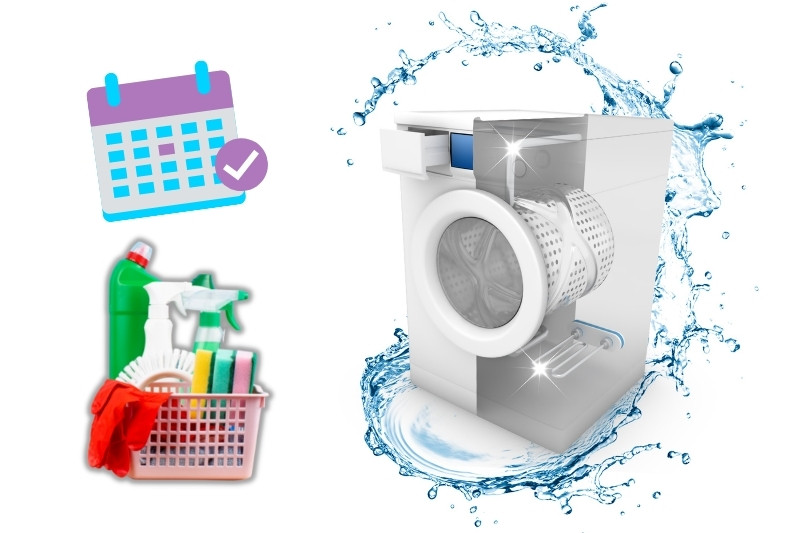
Once you’ve finished cleaning your washing machine, you’ll actually want to keep the machine looking spick and span for as long as possible.
Here are some tips to help you with this matter:
- Run empty hot cycles in between washes to remove any excess dirt and detergent from the appliance.
- Open the washing machine door when it isn’t in use.
- Remove clothes from the washing machine when they’ve been washed – prevents mould.
- Remove unwanted dirt from items before you wash them – prevents blockages.
- Make a habit of cleaning the various sections in your washing machine – the drum, seals, door, front, top and filter.
- Wipe the seals in your appliance down after every use.

Bethan has a passion for exploring, reading, cooking and gardening! When she’s not creating culinary delights for her family, she’s concocting potions to keep her house clean!
